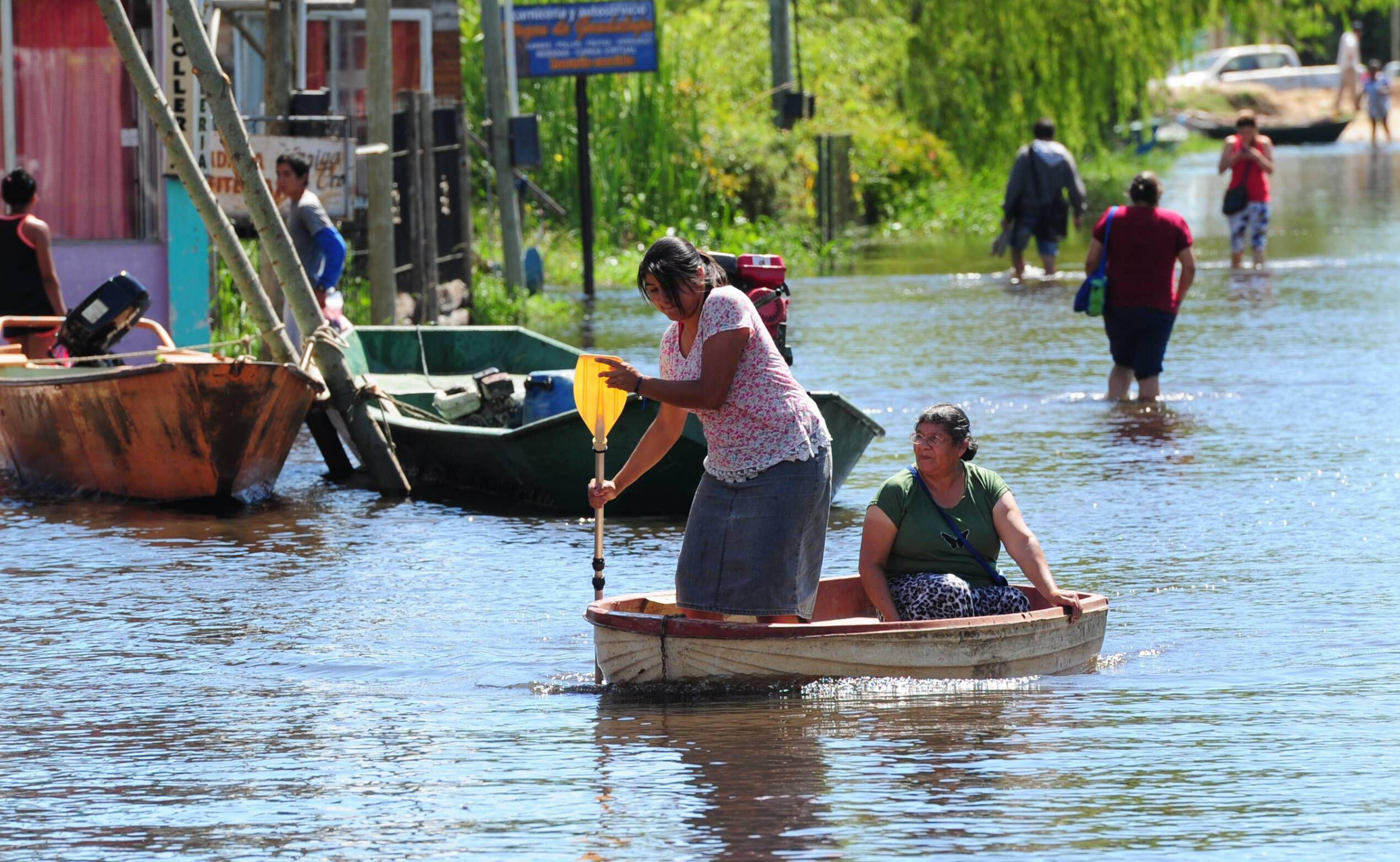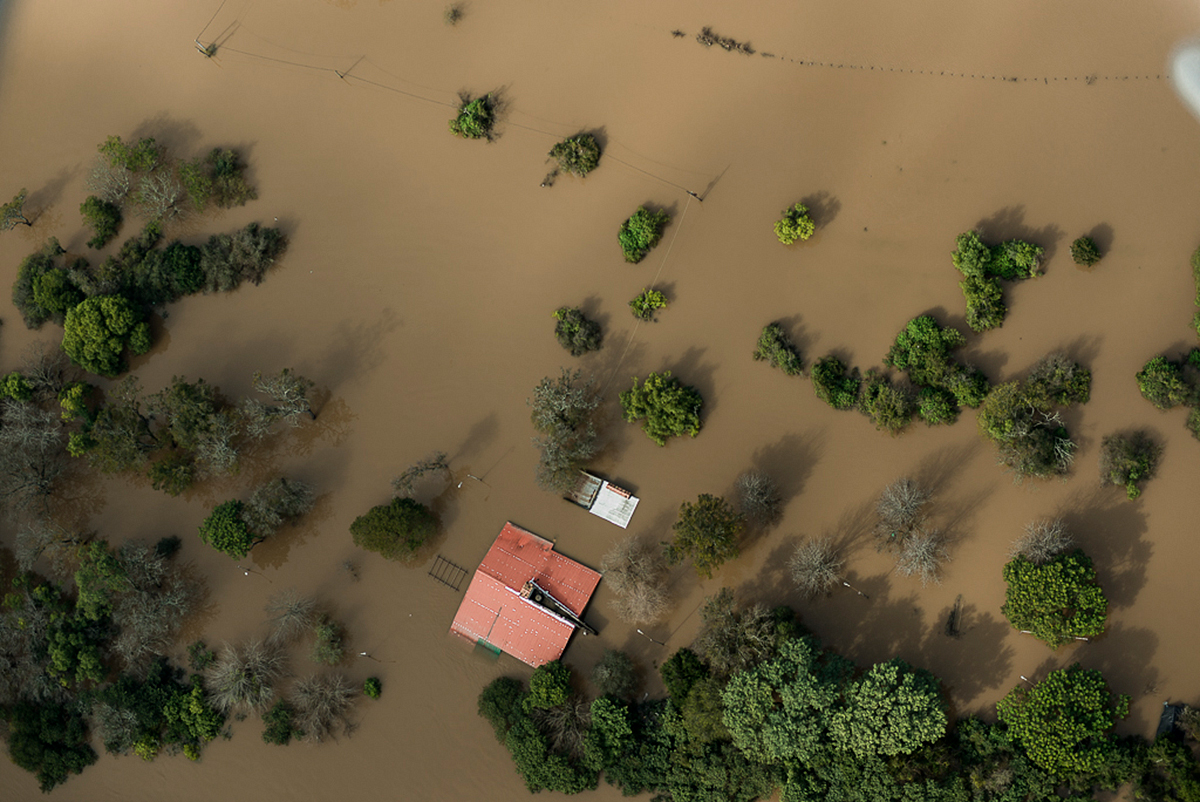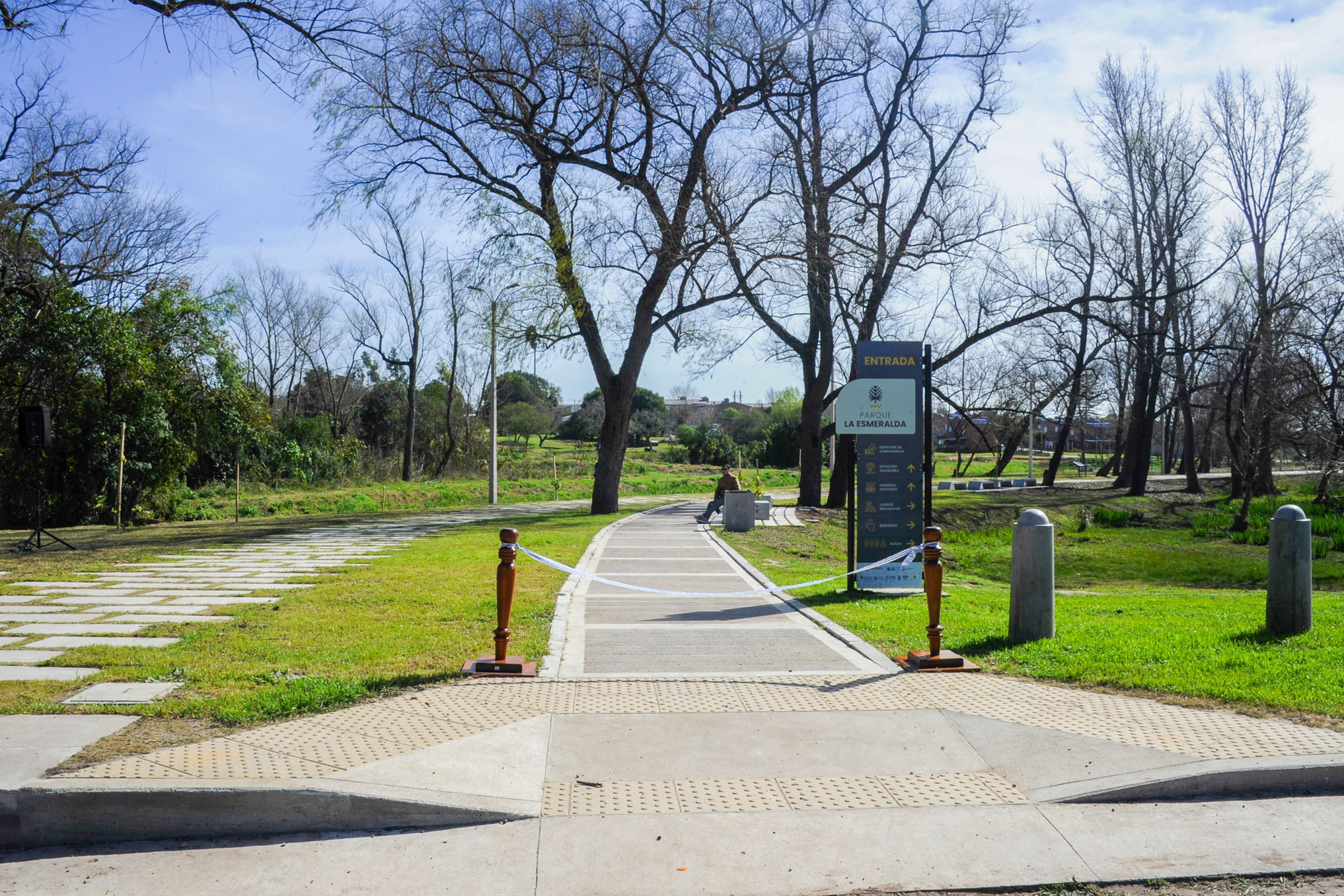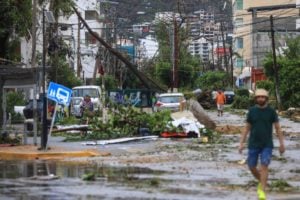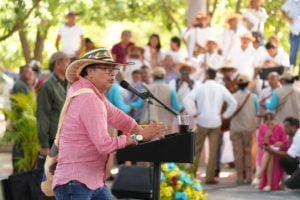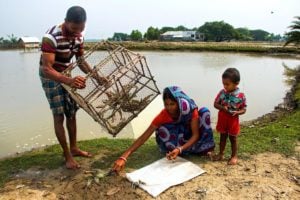“The Uruguay is not a river, it is a blue sky that travels.”
This is how the late Uruguayan poet and singer Aníbal Sampayo described the Uruguay River, in his 1963 song “Río de los Pájaros” – the river of the birds – a tribute to the stream that flows past his home city of Paysandú.
His verses are a kind of sonic photography: they preserve local characters, flora and fauna, and moments of riverside life. But they do not tell of the bad luck that the Uruguay River occasionally brings to those who dwell beside it.
Four years before Sampayo released Río de los Pájaros, its biggest flood in living memory took place. It equally affected the shores of Argentina and Uruguay, which share the final stretch of the river before it joins the estuary of the Río de la Plata.
Six decades on, Paysandú and other cities along the lower reaches of the Uruguay River are facing a similar threat, perhaps worse: increasing rainfall, a trend that is projected to intensify.
In the Argentine province of Entre Ríos, the eastern border of which is formed by the Uruguay River, average annual rainfall increased by 20% between 1960 and 2010. In Uruguay, average annual rainfall is estimated to have increased by 10-20% between 1961 and 2017. The heaviest rainfall over that period was recorded in Uruguay’s south-eastern and south-western regions, the latter of which includes cities bordering the Uruguay River.
“The climate in Uruguay has become tropicalised at a very fast pace in recent decades,” says Gustavo Olveyra, a coastal adaptation specialist for the United Nations Development Programme (UNDP) in the country. “It is raining more and worse, because there are more days with extreme phenomena; the frequency and intensity of winds have increased; the number of very hot days and the duration of droughts have increased.”
Patricia La Nasa, a specialist in environmental conflicts and risk control in Argentina, agrees: “We are seeing changes in seasonality and in the amount of average and torrential rainfall per year.”
But it is not only the climate that has impacted the river and life around it. Some riverside cities have seen a growth in their urban area of as much as 200% in the past 20 years, while forest fires and deforestation – especially to the north in southern Brazil, where the Uruguay River begins – have become part of the landscape. Other factors have taken their toll, too: the expansion of livestock agriculture and forestry industries on both banks, the degradation of wetlands, and changes in land use that prevent the absorption of flood water.
The flow of the Uruguay River has also been permanently complicated by the Salto Grande dam, positioned between Argentina and Uruguay. Inaugurated in 1979, it features a reservoir that covers almost 800 km2 (close to double the area of Barbados) with a 2,500m-long concrete and earth wall. “The Uruguay should be a stable river,” says La Nasa, “but the dam dramatically changed its downstream dynamics. It changed the flow velocities, the way it sedimented and the degradation processes of the coastal edges.”
Mass displacement
In September, torrential rains in southern Brazil overwhelmed the Salto Grande dam, forcing the release of more water than usual onto the downstream Uruguay River for several months. This was compounded by above-average local rainfall. As a result, all cities on both sides of the river endured varying degrees of flooding from mid-October until early January: Concordia, Concepción del Uruguay, Colón and Gualeguaychú in Argentina; Bella Unión, Salto, Paysandú, San Javier, Nuevo Berlín and Fray Bentos in Uruguay.
More than 3,000 people were forced to leave their homes in Paysandú, as well as approximately 500 families in Concordia. Authorities in both cities have made efforts to relocate people living in flood-prone areas to safer neighbourhoods in recent years.
This measure of displacing inhabitants of low-lying land or inland watersheds – who are generally also of limited economic means – has been pursued by the most affected municipalities, but has been controversial.
Alejandra Puglia, a teacher and member of the environmental organisation Amigos de los Humedales (Friends of the Wetlands) in Fray Bentos, told Diálogo Chino that many families do not want to be displaced: “They have a strong sense of belonging, and lack alternatives or opportunities to change their way of life if they are relocated elsewhere in the city.”
Adaptation on the Uruguay River
In 2015, this accumulation of issues prompted a push for the UN Climate Change Adaptation Fund to finance a project in the lower section of the river, downstream of the Salto Grande dam. The result is the four-year Río Uruguay Climate Action Plan, being implemented by the UNDP between 2021 and 2025. The project is using a US$14 million budget to fund works and activities equally distributed across 12 towns and cities on both banks of the river, representing approximately 650,000 people in total.
The latest flooding reinforced the notion that such adaptation is essential. “This time wasn’t the worst – the biggest problem was that it lasted too long,” says Natalia García, the Río Uruguay Climate Action Plan’s coordinator on the Uruguayan side.
The first and most advanced step of this project is training citizens and government officials on the effects of climate change, so that this perspective can be incorporated into urban planning codes.
“People need to know what to do when early warning systems tell them that a storm with high winds is coming,” says the UNDP’s Olveyra, who is serving as an adaptation specialist for the project. “Do we shelter them in safe places away from windows, or send them home with the risk that the storm will find them waiting for the bus?”
When Buenos Aires turns on the lights, the Salto Grande dam opens the floodgates to produce more energy, causing pronounced changes in the river levelPatricia La Nasa, environmental risk control specialist in Argentina
The creation of “flood parks” or riverside promenades is common among almost all participating cities. “These are areas that have generally been freed up after the relocation of residents,” explains García. “The aim of the parks is to prevent them from being reoccupied by informal settlements, which reduces risks, and at the same time to revalue the ecosystem services provided by nature in the floodplain.”
To date, only La Esmeralda park in Fray Bentos has been inaugurated. The rest are still in the pre-approval stage or under construction.
In Fray Bentos and Nuevo Berlín, both located in Uruguay’s Río Negro department, the recovery of native flora in parks and streets has become a focus area. Diálogo Chino spoke to Río Negro’s environment, hygiene and bromatology director, Adrián Stagi: “We have designed a park along the Los Laureles stream that we will reforest with native tree and flower species. And we want to do the same for the urban trees in the city.”
Work to reduce or halt the serious consequences of riverbank erosion is another focus of the adaptation plan. It is one of the main consequences of the dam’s daily water management. “When Buenos Aires turns on the lights, Salto Grande needs to produce more energy and opens the floodgates,” says La Nasa, who is overseeing the Argentine elements of the project’s social and environmental safeguards. “This causes pronounced changes in the river level in a matter of hours and accelerates the erosion of banks, beaches and shorelines.”
In Concordia, Argentina, the erosion of riverbanks is causing debris to gather at abstraction sites used by the city’s water treatment plant, posing a threat to quality and safety of drinking water. To combat this, one of Argentina’s largest riverbank defence initiatives has been proposed to consolidate the eroding areas. Similar work is being planned further upstream, in Argentina’s El Palmar National Park, and along a road towards Rincón de Franquía, a protected area in the north-west corner of Uruguay.
The next steps
The Río Uruguay Climate Action Plan is scheduled for completion in 2025. Some of those in charge admit this time frame is not substantial enough to solve all the river’s existing problems. “The virtue is to focus on these issues and to raise awareness among the population and the authorities,” says La Nasa. “After that, each aspect will have to be managed constantly and intensively for a long time to come.”
Awareness among the municipalities along the river seems to have improved, with adaptation ideas driven by the project starting to emerge. For example, Concordia is soon to inaugurate a water purification plant, Fray Bentos is working on a composting plant, and Río Negro on an effluent treatment plant. Meanwhile, Uruguay is looking to upgrade its early warning capabilities from a regional patchwork to a national, multi-threat warning system.
For now, those living along the river wait to see if forecasts predicting further above-average rainfall fuelled by the El Niño climate phenomenon come to pass. All the while, the Uruguay River continues its journey. It’s not always a journey of blue skies and bucolic charm that Aníbal Sampayo sang of, but with the support of the climate adaptation project, there could be positive change ahead, and benefits for over half a million people living along the river’s banks.
